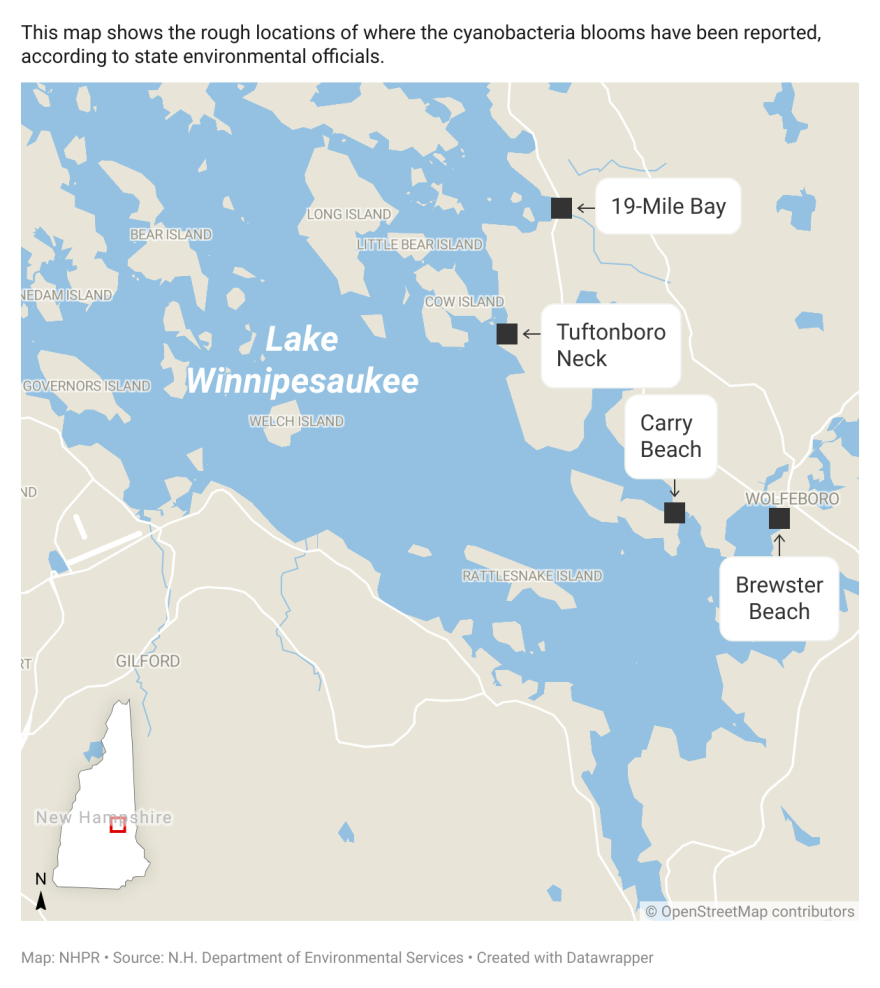Cyanobacteria blooms, a kind of blue-green algae that can be toxic to humans and pets, have been reported on parts of Lake Winnipesaukee.
New Hampshire’s Department of Environmental Services has issued warnings for two areas in Wolfeboro, Carry Beach and Brewster Beach, and two in Tuftonboro, 19-Mile and Tuftonboro neck.
The state issues warnings when concentrations of cyanobacteria cells are high enough that enough toxins could be present to threaten public health.
Exposure to cyanobacteria could cause symptoms from skin irritation and stomach cramps to acute liver damage. Children and pets are particularly vulnerable.
State officials say people should stay out of the water and particularly avoid playing in or around the blooms. They also recommend not using the water for drinking, washing dishes, or bathing, even if it has been boiled or filtered.
Read more about how climate change is affecting cyanobacteria in New Hampshire and what you can do to prevent it.
Blooms look like scum on the surface of a water body, and in this case, on Winnipesaukee, they’re accompanied by a dusting of pollen.
Cyanobacteria blooms can move quickly. People who see blooms, even in places that don’t have current warnings, should stay away and report them to the Department of Environmental Services.
Bloom warnings are increasing in frequency in New Hampshire due to a mix of increases in reporting, more development around water bodies, and heavier precipitation because of climate change. The state maintains a map of cyanobacteria warnings.









